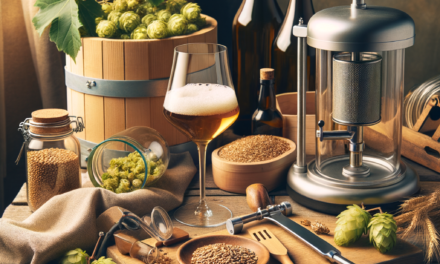Introduction
Embarking on a culinary adventure is not just about feeding ourselves; it’s an act of self-care and creativity. The art of cooking can be a therapeutic and empowering experience, especially for women who are looking to enhance their health and wellness. By incorporating seasonal flavors and ingredients into your cooking, you can ensure freshness, maximize nutrition, and tap into the natural rhythms of the year to benefit your wellbeing. Let’s explore how you can unleash your inner chef and transform your meals into a canvas of vibrant colors, tantalizing tastes, and nourishing ingredients.
Step 1: Embrace Seasonal Ingredients
Start by exploring what’s in season. Seasonal produce is fresher, tastier, and often more affordable. Visit your local farmer’s market or check a seasonal food guide to discover what’s currently at its peak. This practice not only supports local farmers but also reduces your carbon footprint. For winter, think root vegetables, squashes, and citrus fruits; spring welcomes leafy greens and berries; summer bursts with tomatoes, cucumbers, and stone fruits; while fall brings apples, pears, and pumpkins.
Tip:
Plan your meals around one or two seasonal ingredients to simplify shopping and inspire your menu. For inspiration, consider the Greenfeast: Autumn, Winter cookbook (£19.35), which offers a range of delicious and healthy plant-based recipes perfect for the colder months.
Step 2: Experiment with Cooking Techniques
Varying your cooking methods can unlock different flavors and textures. Roasting can caramelize and sweeten vegetables, while steaming preserves their crunch and nutrients. Sautéing with herbs and spices adds depth, and grilling imparts a smoky essence. Don’t be afraid to mix techniques within a single dish for complexity.
Tip:
Keep a well-stocked spice cabinet to easily add a burst of flavor to any dish. For more ideas, Jamie Oliver’s 5 Ingredients – Quick & Easy Food (£15.00) could be a great source of simple yet delicious recipes.
Step 3: Get Creative with Combinations
Think of ingredients in terms of their flavor profiles and how they can complement or contrast each other. Sweet, salty, sour, bitter, and umami are the basic tastes to play with. A dash of salt can enhance the sweetness of a dish, while a squeeze of lemon adds brightness. Pairing creamy textures with crunchy elements provides a satisfying contrast.
Tip:
Use a variety of colored ingredients to create a visually appealing plate that’s also nutrient-dense. The Greenfeast: Spring, Summer cookbook (£17.15) is filled with seasonal vegetarian recipes that are as beautiful as they are tasty.
Step 4: Master the Art of Plating
How you present your food can make it even more appetizing. Use white or solid-colored plates as a blank canvas to let your culinary creations shine. Arrange your food with intention, considering balance and proportion. Garnishes should be edible and complement the dish, not just decorative.
Tip:
Practice the rule of thirds in plating by imagining your plate divided into three sections and placing the main element in one section, leaving room for sides and negative space. For more plating inspiration, the Dishoom cookbook (£20.80) can give you an insight into the artful presentation of Indian cuisine.
Step 5: Reflect and Adjust
Take time to savor your meals and reflect on the flavors and combinations. What worked well? What could be improved? Cooking is an iterative process, and each meal is an opportunity to refine your skills and palate.
Tip:
Keep a cooking journal to note successful dishes, favorite recipes, and experiments to try in the future. For a diverse range of recipes to start with, Simply Raymond: Recipes from Home (£20.12) offers homely dishes that you can tailor to your taste.
Conclusion
Culinary arts are a delightful way to express creativity, nourish your body, and celebrate the seasons. By embracing seasonal ingredients, experimenting with cooking techniques, and getting creative with combinations and plating, you can transform your meals into a joyful expression of health and wellness. Remember, every dish is a chance to learn and grow as a chef and as an individual. So, don your apron, wield your spatula, and let the kitchen be your studio for culinary creativity.










